 Welcome to Alicia’s monthly advice column where she’ll provide tips on caring for a loved one with —dementia. Alicia Seaver is the Director of Memory Care at Bridges® by EPOCH and is a certified memory impairment specialist. This month’s topic is art therapy.
Welcome to Alicia’s monthly advice column where she’ll provide tips on caring for a loved one with —dementia. Alicia Seaver is the Director of Memory Care at Bridges® by EPOCH and is a certified memory impairment specialist. This month’s topic is art therapy.
Art is a powerful tool for those affected by dementia. In addition to being an important avenue for self-expression, the act of making art stimulates the brain and has the power to trigger memories—perhaps the name of a friend or relative is forgotten, but the artist can remember the person’s face and draw it out. This phenomenon happens because the act of making art triggers muscle memory, creates new paths between brain cells and allows people to communicative non-verbally, as well as on a deeper level.
But the benefits of art go beyond facilitating reminiscence. Creating art relieves stress and provides people with a sense of purpose. During the process of making art, the artist must focus on the task at hand—this can allow the brain to quiet down and relieve itself of the agitation and frustration people living with memory impairment often experience.
Oftentimes, art takes places in social settings such as a class or workshop. This social interaction further reduces stress and allows people of different backgrounds to come together and share a common interest. When finished creating, artists have something beautiful to look at, and there is a sense of pride and accomplishment. Art allows people to see what they can do with a bit of focus and creativity.
It’s important not to choose art activities that are too easy and geared toward children, as this can fail to engage your loved one and come off as demeaning. Give your loved one the opportunity to create something more complex. It’s important to remember that this is their time, so if you give them materials and guidelines, and they deviate from engaging in the project in the way you’d envisioned, let it happen. While caregivers should observe the activity and adjust or modify if needed, the pace should be slow and the attitude should be patient. It’s important to encourage the artist.
There are many art activities that have proven successful for individuals living with memory impairment. Below are a few resident favorites from the Bridges by EPOCH communities:
- Drawing and painting gives artists a more traditional medium to create images from memory, or to express emotions. It may help to provide something to emulate or interpret—a still life object, a photo or another painting are all great options.
- Sculpting engages all five senses, and can also help improve dexterity and motor skills. As with painting or drawing, it may be helpful to provide your loved one with a simple object to model, such as a piece of fruit or a cup/mug.
- Knitting and sewing is a creative action that your loved one may already have experience with, and that leaves them with a tangible, functional product upon completion. Several Bridges by EPOCH communities use Mitsy Kits, which are designed specifically to help those with cognitive disorders do these activities with ease.
- Scrapbooking allows artists with dementia to work with materials from their past (such as photos, old letters, or other mementos) to construct a visual narrative. This activity may be especially helpful in stimulating lost or distant memories.
- Creating floral arrangements also engages all five senses, not to mention that the presence of plants has been shown to reduce stress. Plus, flowers are just plain beautiful!
Art will not reverse the effects of memory impairment, but it can stimulate the brain in new ways, help those affected better cope with their symptoms and is often an all-around good time. Best of luck in tapping your loved one’s creative side!
If there is a topic you would like Alicia to discuss, please send suggestions to [email protected].


